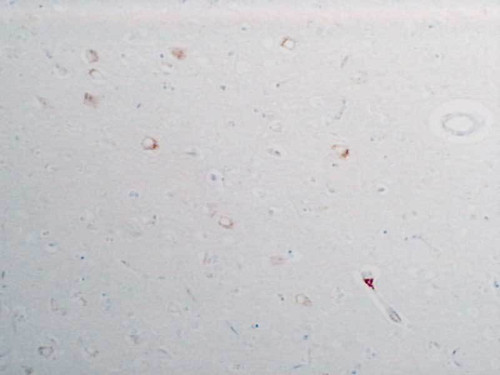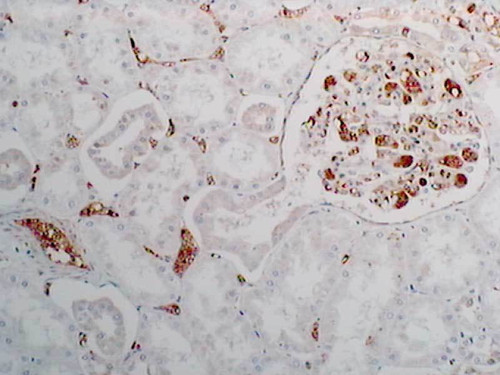Mammalian cells transport glucose through a family of membrane proteins known as glucose transporters (GLUTs or SLC2A family). Mammalian tissues are known to express different glucose transporter isoforms (existing at least GLUTs 1-13) in different tissues. The molecular weight are 40-60 kDa, respectively. GLUT-1 has a high affinity with glucose (Km 1-5 mM) and mediates glucose transport into red cells, and throughout the blood brain barrier. It is ubiquitously expressed and transport glucose in most cells, such as red cells, embryo tissues, brain, kidney or tumor cells. GLUT-3 has a high affinity with glucose (Km 1 -5 mM) and is the main transporter in brain (neurons). GLUT-5 transports fructose in intestine and testis. Especially, our GLUT-5 antibody detects microglia selectively in immnostaining, and doesn't react with monocytes and monocyte-derived macrophages. Immunostaining by this antibody excels in the form observation compared with staining by other antibodies reported as microglia markers, and it makes it easy to distinguish between a static type and an active type in the form observation. For research use only, not for use in diagnostic procedures.
- application:
- IHC, WB
- Catalog number:
- 18903
- Datasheet:
- formulation:
- Lyophilized product from 1% BSA in PBS containing 0.05% NaN3
- immunogen:
- Synthetic peptide of the C terminal part of human GLUT-3 ((C)SGKDGVMEMNSIEPAKETT)
- MSDS:
- notes:
- For research use only, not for use in diagnostic procedures.
The datasheet for this product (see above) is intended to serve as an example only. Please refer to the datasheet provided with the antibody for precise details. - Other names:
- Please see datasheet
- Protocol:
- purification:
- Purified with antigen peptide
- size:
- 100 µg
- specificity:
- Confirmed by western blotting using transfectant cells
- storage:
- Lyophilized product, 5 years at 2 - 8 °C, Solution, 2 years at -20 °C
- Species:
- Human
- Host:
- Rabbit







